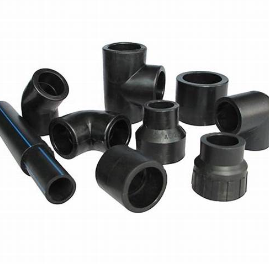Leading Manufacturer and Supplier of High-Quality Valves and Pipe Fittings Solutions
Understanding the Importance of Valves and Pipe Fittings in Modern Industry
Valves and pipe fittings are integral components of any piping system, serving functions that range from controlling the flow of liquids and gases to connecting sections of pipe in various industrial applications. The manufacturers of these components play a crucial role in ensuring the efficiency, safety, and reliability of countless operations across various sectors, including oil and gas, water treatment, chemical processing, and pharmaceuticals.
The Role of Valves in Piping Systems
Valves are devices that regulate, direct, or control the flow of fluids within a piping system. Their importance cannot be overstated, as they help maintain pressure levels, prevent backflow, and protect against leaks. There are several types of valves used in the industry, including gate valves, ball valves, butterfly valves, and check valves, each serving a specific purpose.
1. Gate Valves These are primarily used for on/off control of fluid flow. When fully open, they allow for minimal flow resistance, making them ideal for applications where there are infrequent flow restrictions.
2. Ball Valves Known for their durability and excellent sealing properties, ball valves are used in applications requiring quick shut-off. With a spherical disc that rotates, they provide reliable operation with low torque.
3. Butterfly Valves These are lightweight and compact, suitable for regulating flow. The design consists of a rotating disc, which makes them ideal for large volume flows, often in water treatment and HVAC systems.
4. Check Valves Their primary function is to prevent backflow in a piping system. Check valves operate automatically, allowing fluid to flow in one direction only, which is crucial in protecting pumps and compressors.
The Function of Pipe Fittings
Pipe fittings are essential for connecting sections of pipe and adjusting the direction of fluid flow. Various types of fittings exist, including elbows, tees, reducers, and couplings, each designed for specific applications. Understanding the role of these fittings is vital for engineers and technicians in ensuring the integrity and functionality of piping systems.
1. Elbows Used to change the direction of flow, elbows are available in various angles, with 90-degree and 45-degree elbows being the most common. They are crucial in navigating complex piping arrangements.
valves pipe fittings manufacturer

2. Tees These fittings create branches in a pipe layout, facilitating multiple flow paths. Tees are used in both supply and return lines, enabling efficient fluid distribution.
3. Reducers When the pipe diameter needs to be changed, reducers are used. They can be either concentric or eccentric and are essential for maintaining pressure and flow rates during transitions.
4. Couplings These fittings connect two pieces of pipe, allowing for easy installation and repair. They can be welded, threaded, or use a mechanical clamp, depending on the application.
The Importance of Quality Manufacturing
The demand for reliable valves and pipe fittings necessitates high manufacturing standards. Quality assurance in production ensures that these components can withstand high pressures and temperatures while resisting corrosion and wear. Manufacturers must comply with international standards and regulations, such as those set by the American National Standards Institute (ANSI) or the American Society of Mechanical Engineers (ASME).
Innovation in Valves and Fittings
As industries evolve, so do the technologies surrounding valves and pipe fittings. Recent innovations include smart valves equipped with sensors that monitor flow rates, pressure levels, and temperature changes in real-time. Such advancements enable predictive maintenance, reducing downtime and increasing system efficiency.
Additionally, sustainable manufacturing practices are on the rise, with efforts to reduce the environmental impact of production processes. Manufacturers are increasingly using recyclable materials and eco-friendly practices to produce valves and fittings, addressing the growing demand for sustainability in all aspects of manufacturing.
Conclusion
Valves and pipe fittings may seem like small components in the grand scale of industrial operations, but their impact is profound. They ensure the safe and efficient movement of fluids, contribute to system reliability, and are fundamental in preventing costly breakdowns and accidents. As industries continue to advance, the manufacturers of these critical components must adapt, innovate, and uphold the highest standards of quality to meet the demands of a changing world. Understanding the intricacies of valves and pipe fittings is essential for anyone involved in the design, maintenance, or operation of piping systems.
-
The Key to Fluid Control: Exploring the Advantages of Ball Valves in Industrial SystemsNewsJul.09,2025
-
The Versatile World of 1, 2, and 3 Piece Ball ValvesNewsJul.09,2025
-
Stainless Steel Ball Valves: The Ideal Choice for Efficient Flow ControlNewsJul.09,2025
-
Optimizing Fluid Control with Ball Float ValvesNewsJul.09,2025
-
Manual Gate Valves: Essential for Control and EfficiencyNewsJul.09,2025
-
Everything You Need to Know About Butterfly ValvesNewsJul.09,2025
-
The Versatility of Wafer Type Butterfly ValvesNewsJul.08,2025




